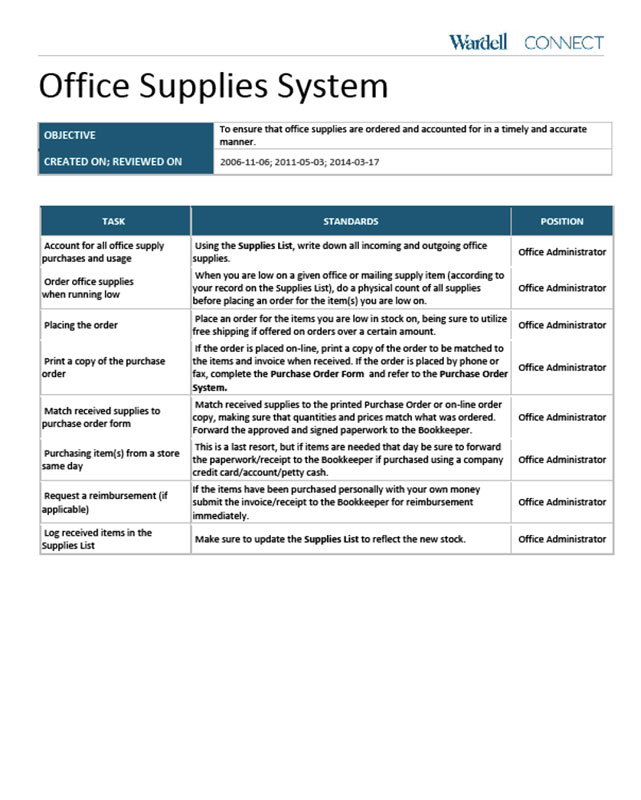Systems Development
Your next step will be to develop and document the systems that will get your business running smoothly and efficiently. You probably already have quite a few systems in place, although few are likely documented. This will be your chance to get them, and your business, under control.
As you look at your list of systems, you may be a little intimidated by the size of the project in front of you. A complex business can contain hundreds, even thousands, of systems and you may wonder where you'll find the time to get them all done. Should this be the case, keep the following in mind.
There’s no need to take this process to the extreme. You need to do a thorough job, but rarely is it appropriate to organize your business right down to the smallest detail. Do what works best for you and your business in its current form. You can always add systems in the future if necessary.
You don’t have to do everything all at once. Some activities will take priority over others and some activities will take more time and energy than others. If necessary, spread your due dates out further to give yourself a more realistic time frame. You can’t completely organize a business overnight.
You are not the one who should be doing all of the work. You will need to take the visionary lead in the process, but as we go along your staff should become more and more involved in doing the actual work.
Systems development is an ongoing process. It's not a project that you can finish and be done with. Systems Development is a whole new way of doing business. It's the process of constant and never-ending improvement, and it has the power to change the lives of all those who embrace it.
Your business is made up of living systems; systems that will evolve as your business evolves. In order to stay healthy, it must constantly reinvent and improve itself. Just as a healthy individual must engage in ongoing personal development (i.e. physically, emotionally, intellectually, socially and spiritually), so must a healthy business engage in ongoing systems development.

Systems Template
The easiest way to write a system is to use a System Template to determine: What's the task? How's the task done? Who is responsible to do the task? Systems Templates look like this.

The example below represents a simple system for ordering office supplies. Use this, or an equally simple management system, for your first attempt. After you have been through the process once, you’ll be better prepared to tackle the rest of your systems list.

Your System’s Purpose
Each system you write must have a purpose. It must exist for a specific reason. If it does not, it's waste of resources and must be discarded or amended so that it does.
In the broadest sense, the purpose or main goal of each system is to move your business up the Value Pyramid. Try to keep this general purpose in mind as you look at each new system.
Example: “To ensure that office supplies are ordered and accounted for in a timely and accurate manner.”
Your first step in designing your system is to identify its purpose. Use the space below to document the purpose of the system you have chosen.
Your first draft: Write a System exactly as it currently functions. This will serve as your working draft for the pages that follow. When you are done, try explaining it to someone not familiar with it. This will help you discover any steps you may have unintentionally left out.